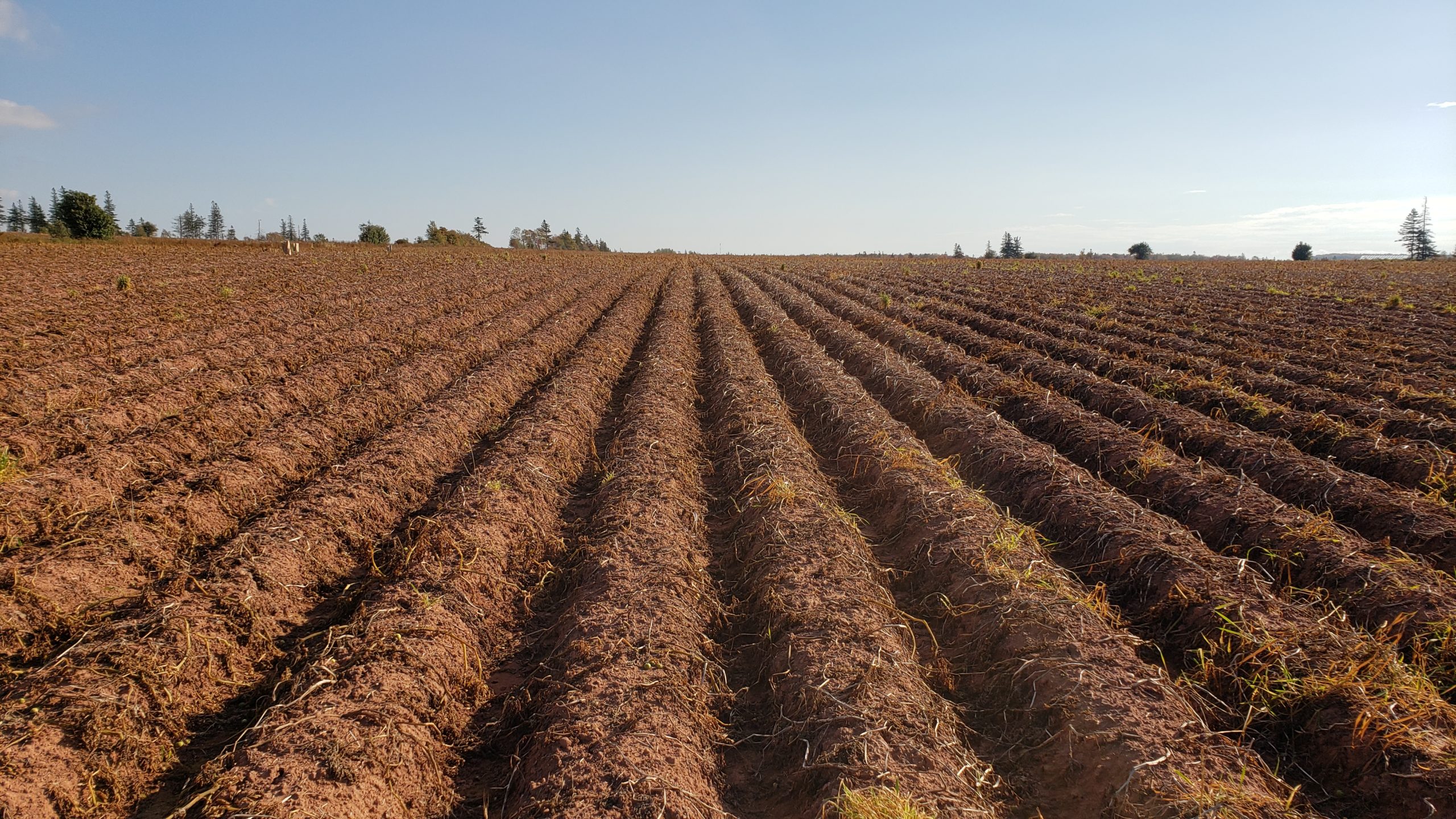
14 Oct Agronomy Update – October 14th
Hi everyone,
Today is a rare day in the office today…letting things dry out before getting back to yield sampling tomorrow. It looks like most of the Island got between 10-20 mm of rain yesterday. In most communities, that amount of rain is likely welcome, as the soil was getting pretty dry in most places. A little bit of soil moisture should help with soil movement on the chains and reduced skinning/bruising on the spuds.
Morgan and I are getting close to the finish line on yield sampling…similarly to many of you! It appears like as a province, we’re about 70-75% done of digging by Oct 13th…that’s terrific news. I hope that conditions continue to be favourable as folks finish up harvest in the next week or so. The long range forecast for the next two weeks is right now calling for above average temperatures and more fine days than wet days.
It should be no surprise that yields continue to be quite strong. Thus far, I’ve only dug a handful of fields that have an average yield less than 300 cwt/acre. In the last week, the majority of fields that we dug have been more in the 330-350 cwt/acre range. Quality also looks to be good. I haven’t been finding many rotten or suspect looking tubers in our sampling. Also haven’t been finding much in the way of severe off-type or wireworm damage in our trials thus far. I hope that growers are finding much of the same!
Wireworm Damage:
I have heard some reports of wireworm damage here and there, but primarily in fields that previously haven’t been a problem for wireworm. Some growers might find value in doing more baiting of fields going into potatoes to assess the risk of wireworm damage and whether an insecticide will be needed. Likewise, installing pitfall traps next spring in fields destined for potatoes in 2023 could also be valuable. If you would like information on installing baits or traps, please feel free to contact me or consult some of the resources on the PEI Potato Agronomy Site under Pests & Diseases.
I will note that the weather conditions this year were generally conducive to a higher level of wireworm damage than in the last few years. Higher levels of soil moisture likely meant that wireworms stayed active in the top layer of soil for longer with lower levels of mortality due to dry soil conditions. When assessing whether or not an insecticide worked, it’s important to compare against a check strip with no treatment or a different type of insecticide, as pest pressure changes from year to year and field to field. Nonetheless, I will be talking with growers, agronomists and researchers this fall and winter to assess how well Cimegra worked in the first year of release and whether any changes to application or additional extension are needed ahead of next year.
A couple of quick notes:
- I will be looking for 30 fields across the province that are destined to be planted to Russet Burbank or a variety with similar levels of susceptibility to Early Dying in 2022 for fall soil sampling after harvest. If you have a field or two that might fit the bill, please send me a note and I’ll start building my list. You get a free Verticillium and nematode test done on that field (we share the results back to you) and then we select 8 fields to follow during the crop next year to help us benchmark Vert & nematode levels against yield and quality.
- Seeing some fields where a cover crop (barley/oats) has been broadcast after plowing or harvesting and the cover hasn’t established due to the lack of recent rainfall. Depending on the situation, it might be worth a quick, shallow scuffle of the field to increase seed to soil contact and improve emergence. The rainfall from last night likely helped quite a bit in this area. Above average temps for the next two weeks should favour good cover crop establishment.
- Once harvest is wrapped up, one of my immediate tasks will be to consult with growers and industry partners on what your priorities for research are. The Canadian Potato Council is updating its National Research Priorities document in advance of the next National Potato Cluster, and we want to make sure that the needs of PEI potato producers are captured and communicated. Stay tuned for more on this in the near future, but if you want any comments that you want to pass along regarding research priorities, particularly topics that you don’t think are currently being addressed, please feel free to drop me a note or give me a quick call or text. The timeframe for this consultation is unfortunately short this time around, but we’ll do our best to make sure that the priorities of Island growers and dealers are included.
All the best for a safe and successful completion of the harvest!
Ryan
